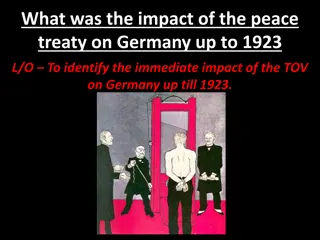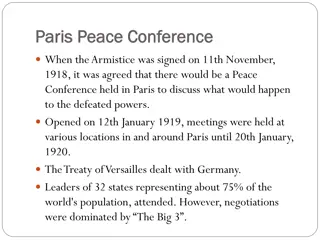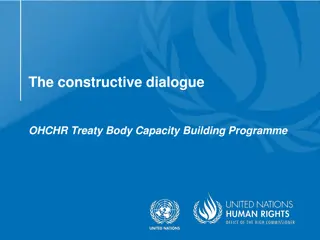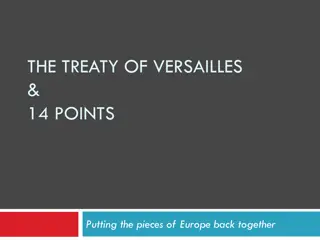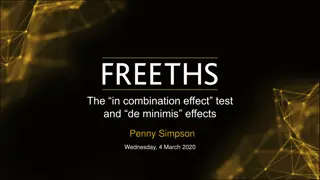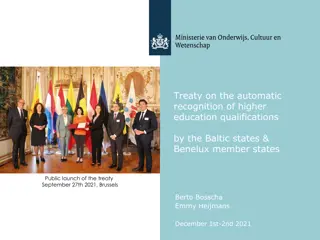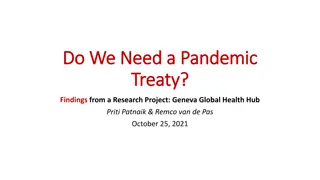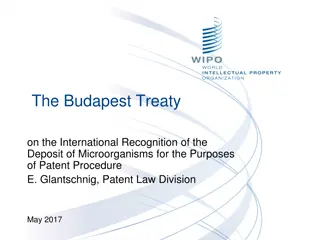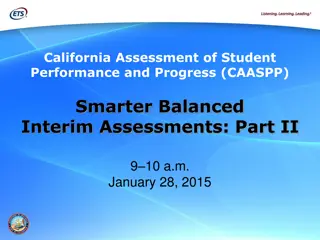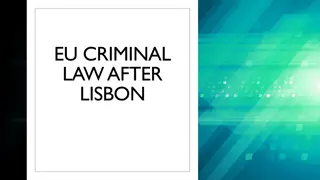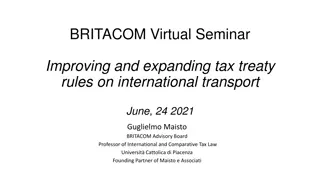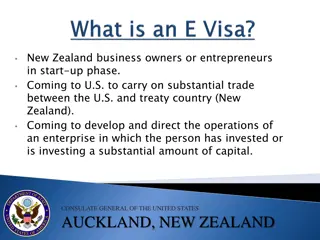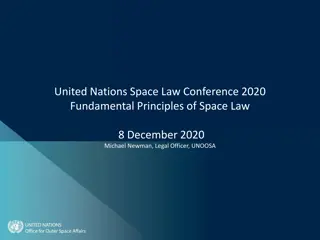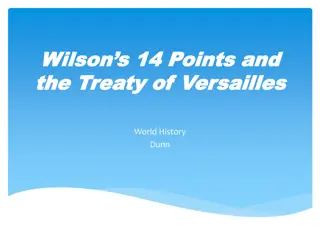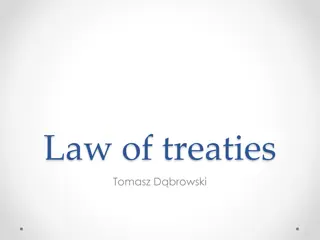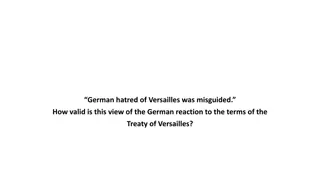
Environmental Impact Assessments: Treaty Provisions and Implementation
This content discusses the operationalization of UNCLOS through processes, thresholds, and requirements for conducting Environmental Impact Assessments, promoting the use of EIA standards. It covers the scope, tiered process, notification and consultation processes, reporting, and the roles of State Parties and the Conference of the Parties. The initial reaction to these updates includes detailed provisions for Cumulative impacts, the use of best available scientific information, traditional knowledge, and considerations of economic, social, cultural, and human health impacts. The focus is on consultation, transparency, and decision-making remaining with the States.
Download Presentation

Please find below an Image/Link to download the presentation.
The content on the website is provided AS IS for your information and personal use only. It may not be sold, licensed, or shared on other websites without obtaining consent from the author. If you encounter any issues during the download, it is possible that the publisher has removed the file from their server.
You are allowed to download the files provided on this website for personal or commercial use, subject to the condition that they are used lawfully. All files are the property of their respective owners.
The content on the website is provided AS IS for your information and personal use only. It may not be sold, licensed, or shared on other websites without obtaining consent from the author.
E N D
Presentation Transcript
Treaty provisions Objectives: Operationalize UNCLOS by establishing processes, thresholds & other requirements for conducting EIA; bring coherence Promote use of EIA & adoption of BBNJ standards Scope: Activities/impacts occurring within/beyond national jurisdiction Tiered process: screening, scoping, assessment, prevention/mitigation Equivalent processes under other bodies Notification and consultation processes; role for the STB Reporting: EIA report, monitoring
Implementation State Party Conducts process & makes final decision Conference of the Parties Develop mechanism for collaboration with other bodies via STB Upon request, provide advice on whether activity can proceed Clearing-House Mechanism Facilitate access to information: Party must submit a range of notifications, draft reports, justifications & responses to comments Scientific and Technical Body Input to the process; provides comments Develop standards/guidelines Considers final reports for the purpose of developing guidelines
Initial reaction A welcome update to UNCLOS, strengthens obligation & defines process A tiered assessment system Detailed, future-proof provisions, e.g. Cumulative impacts Best available scientific information, traditional knowledge Includes economic, social, cultural & human health impacts Strategic Environmental Assessments (SEA) Strong focus on consultation & transparency ~ Decision-making stays in the hands of States

